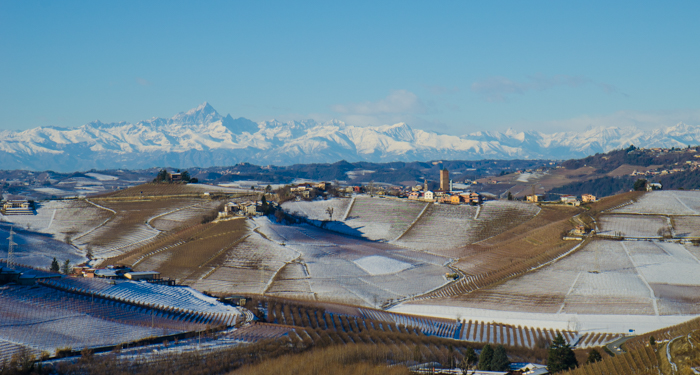
Piedmont’s Langhe area is renowned for its picturesque rolling hills and world class red wines, earning UNESCO recognition for both their natural beauty as well as distinguished wine tradition. While Barolo is typically the main attraction, we begin our Piedmont Walk and Wine tour in the Barbaresco zone, discovering this elegant and approachable sister to Barolo.
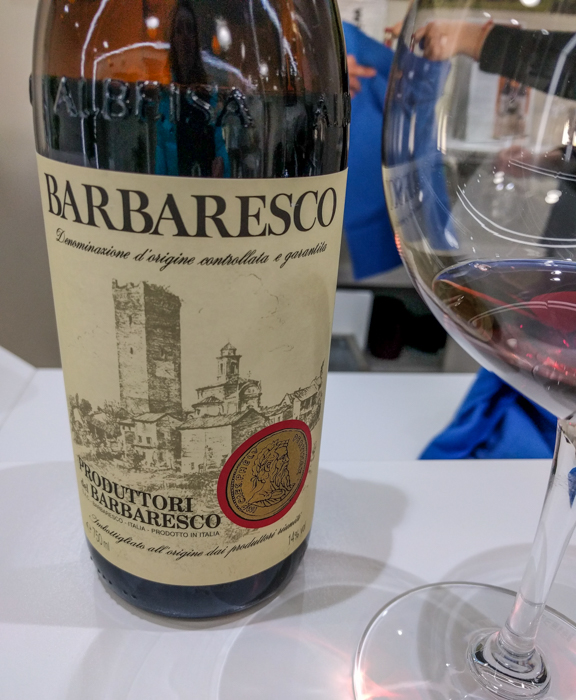
Let’s first look at the similarities between the two. Barolo and Barbaresco are two classic wines from Piedmont. Both are 100% Nebbiolo, a native grape of the region. Both are classified as DOCG by the Italian government, the highest quality designation. Both zones are located in the Langhe hills, a series of steep isolated hills separated by valleys with flatter land. The Barbaresco zone lies just to the north and east of the city of Alba, the main villages of the area are Barbaresco, Neive, and Treiso. The Barolo zone lies to its southwest, a bit further afield, encompassing the towns of Barolo, Serralunga d’Alba, Monforte d’Alba, Castiglione Falletto, Novello, La Morra and Verduno.
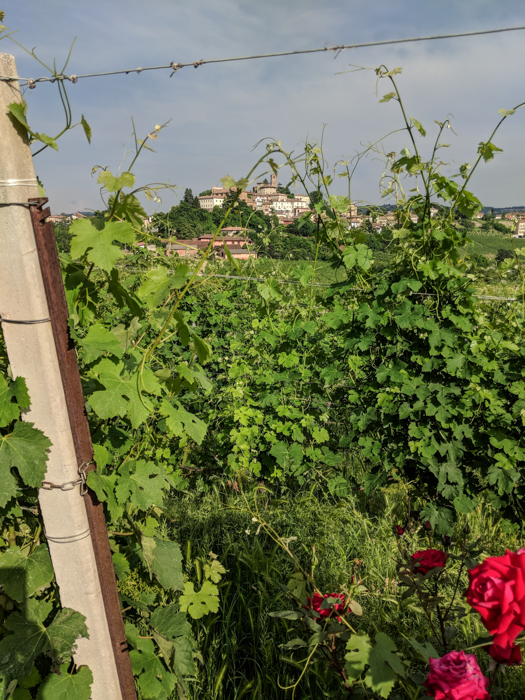
The Langhe hills have been producing wines for thousands of years, back to Roman times. Historically, the populace preferred sweet wines, and Nebbiolo, being a challenging grape to grow, took a back seat to local grapes like Barbera, Dolcetto and Freisa. In the early 1800’s, Piedmont was ruled by the French kingdom of Savoy, and local noblemen, influenced by the French wines, began to innovate. The Marchese and Marchesa Falletti of Turin brought a French wine technologist, Louis Oudart, to their estates in Serralunga and La Morra to introduce viticulture practices like barrel aging and temperature control. Slightly later, Camillo Benso, the Conte di Grinzane, hired Oudart to develop a style of wine that was more like the contemporary Bordeaux red wines, dry and barrel aged.
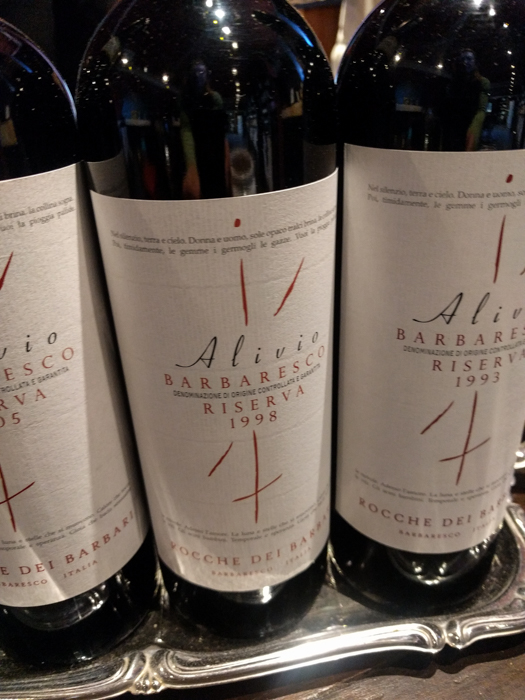
Initially, the grapes grown in the Barbaresco zone were sold to Barolo producers to include in their wines. At the end of the 19th century, Barbaresco was created as a wine name of its own when the producers of Barolo refused to extend their name to include wines from the towns around Barbaresco. In the early 20th century the wine producers of the area suffered several set-backs, first, the root louse phylloxera, followed by two World Wars, separated by the great depression. When post-war recovery began in the late 1940’s, Barolo and Barbaresco wines resumed their rise in quality. They both became DOC wines in 1966, and were granted DOCG status in 1980.
Although close in proximity, one difference in Barolo and Barbaresco is in the terroir. The Barbaresco zone is near proximity the Tanaro River. The river generates warmer morning temperatures, so the grapes mature earlier. Both soils are calcareous marl, a lime-rich clay-based soil. But the soil in Barbaresco is richer in nutrients and, because of this, the vines don’t produce as much tannin as found in the wines of Barolo. Barbaresco exhibits Barolo-like qualities; aromas of roses, perfume and cherry with a persistent finish. But it is fresher, drinkable earlier, with typically less tannins. These high tannins require longer aging to tame, so Barbaresco only requires 2 years of aging, rather than the 3 required for Barolo. Both wines are not always full-bodied and dark in color. But they are complex and well structured. Many described Barbaresco as more “feminine” than its counterpart.
Barbaresco’s growing zone is small, just 1,823 acres, producing just under 5 million bottles per year. That is fewer than one bottle per resident of the Piedmont region of Italy. The village of Barbaresco is the historical heart of the denomination and the center of production. Its complex combination of calcareous clay, marl, and sandy veins produces the most complex and age worthy wines in the zone.
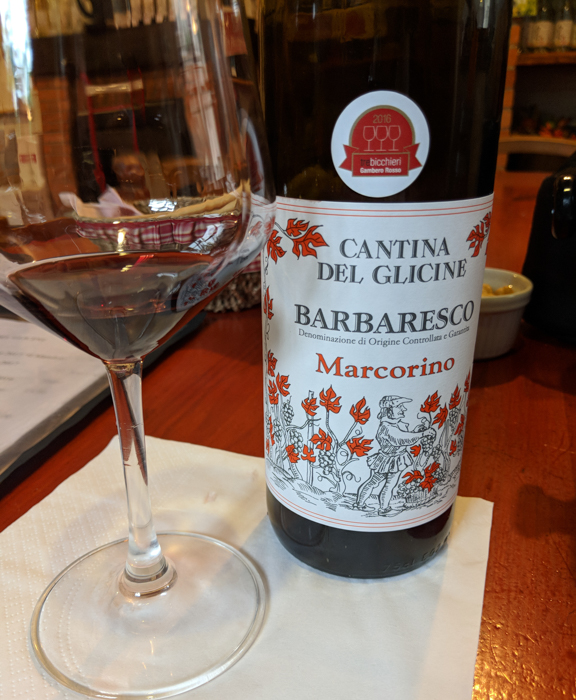
Neive, a lovely walled town where we begin our tour, produces a wide variety of styles, from younger and fresher to full-bodied and tannic. Vineyards on Barbaresco side are more tannic and structured, those on the east have more sand and yield less structured, more accessible wines.
Treiso holds the highest altitude vineyards in the denomination, with the largest diurnal temperature variations. These wines are more floral, fresh and elegant.
Barbaresco became the first wine area of Italy to officially map out its crus and has incorporated those vineyard delineations into its DOCG. The following map, put out by the Consorzio di Tutela Barolo Barbaresco, illustrates the crus.
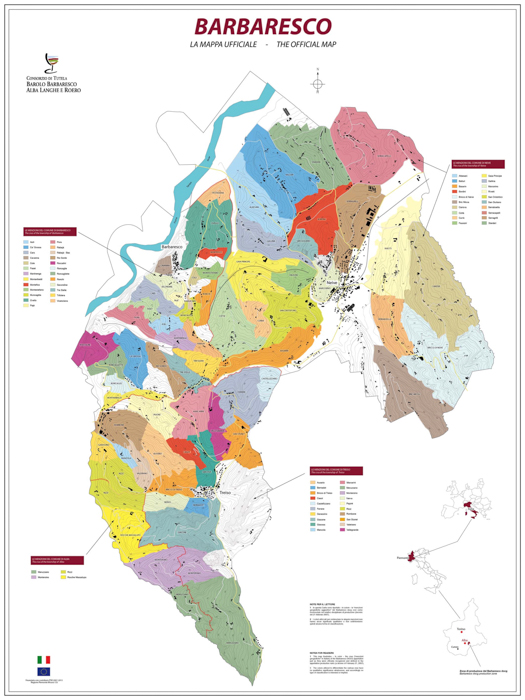

2 Responses to Walk and Wine in Italy – The Terroir of Barbaresco